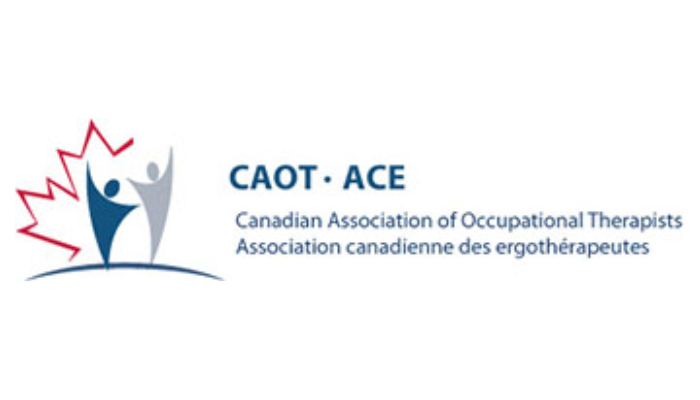Information Box Group

College of Occupational Therapists of Ontario
OTs are regulated by the College of Occupational Therapists of Ontario (COTO). COTO oversees the profession, ensuring the public’s safety and holding OTs to a high standard of practice.

Canadian Association of Occupational Therapists
The Canadian Association of Occupational Therapists (CAOT) support OTs nation wide through credentialing, professional development and promotion of the profession.

Ontario Society of Occupational Therapists
The Ontario Society of Occupational Therapists (OSOT) is the voluntary association for OTs in Ontario. As Canada’s first occupational therapy organization, OSOT has been promoting the profession of occupational therapy since 1921.
Learn more about our profession from two occupational therapists
Angela Everest
Please tell me about your current role and your workplace environment/setting.
I am employed in a hospital the area of mental health. I work with patients who need support to resume roles that have been disrupted due to their illness. I practice as an OT/psychotherapist using a variety of modalities, such as CBT, behavioral activation.
What made you want to become an OT?
I enjoy working with people, solving problems, and having a set of professional skills that are in demand.
What is the most rewarding part of your role?
Seeing clients get better is a very rewarding experience. Also my job can evolve as I am able to continually learn new modalities/ techniques to enhance my professional skills.
Although every day, and every client is different, what would you say a “typical” day is like in your role?
My job involves running psychoeducation groups, doing individual psychotherapy, charting on my interactions with clients, and liaising with other team members. I conduct assessments, establish treatment plans, and develop discharge plans.
What skills and attributes do you think lend themselves best to the practice of Occupational Therapy?
I think being curious, thinking critically and creatively, being a good listener, and knowing why you are using a particular approach or modality are Important skills and attributes. Strong verbal communication and writing skills are essential. OTs, in my opinion, are practical and good problem solvers.
What advice would you give someone who is interested in pursuing Occupational Therapy as a career?
Connect with an OT and find out about their job. Check out the College of Occupational Therapists’ website to see what it means to be a regulated health care professional.
What do you do to stay current in the field of Occupational Therapy?
I take courses related to my job, read information provided by the College of Occupational Therapists and the Ontario Society of Occupational Therapists, keep up with current standards, and connect with other OTs.
Raelene Corbin
Please tell me about your current role and your workplace environment/setting.
I currently work in early psychosis intervention with individuals who have experienced a first episode of psychosis. My clients are typically young adults ranging in the ages of 16-35 years old. It is an outpatient setting where clients are supported by a variety of clinicians. We have occupational therapy, psychiatry, psychology, social work, recreation therapy, peer support, addiction specialists and nursing staff. I mainly support clients with goals related to school, work and behavioural activation. Most days I am in the clinic where clients will meet with me, but I also do community visits and outreach. I also help plan, organize and facilitate many of our monthly groups for clients and I am a member of various committees at the hospital and outside of the organization.
What made you want to become an OT?
I had learned about the profession through a friend who was a new OT at the time. I intrigued by the other services I could offer as an OT.
What is the most rewarding part of your role?
Seeing my clients achieve their goals, despite the barriers along the way, and getting back to what they enjoy.
Although every day, and every client is different, what would you say a “typical” day is like in your role?
I am always assisting clients with identifying their goals and making plans. This includes connecting clients with available supports and resources and advocating on their behalf. This can involve contacting employers and schools, assisting with retroactive withdrawals, return to work planning, setting up appropriate accommodations, employment readiness (resume building, interview skill development, job search, bus training…etc.). I also can be out in the community or facilitating a group and encouraging clients to engage in specific skill development or activities. Providing education is another part of my role.
What skills and attributes do you think lend themselves best to the practice of Occupational Therapy?
Certainly being able to identify the person’s strengths and barriers, in addition to considering the environmental and occupational factors. Learning how to be a self-directed learner has also been very important when moving into a new role. With so many unique opportunities, one can not assume the training they will receive will cover everything they need to know. There is always more learning to gain over time.
What advice would you give someone who is interested in pursuing Occupational Therapy as a career?
Have an open mind when thinking about what you would like to do after graduation. Don’t get stuck thinking you’ll only want to be working in a specific area. There are so many areas of practice and unique roles in which OTs are working. Take some time to explore these areas and speak to OTs who are currently practicing to learn more. Volunteer! shadow! continue with professional development.
What do you do to stay current in the field of Occupational Therapy?
Each year I sign up for workshops and/or look for new learning opportunities. I have also been striving to complete additional training to further my professional development and expand my skill set. I have a goal to try and take at least 1 student OT each year and stay connected with my colleagues within and outside of the workplace.
